As Phoenix sizzles, 'urban island' phenomenon compounds heat (Update)
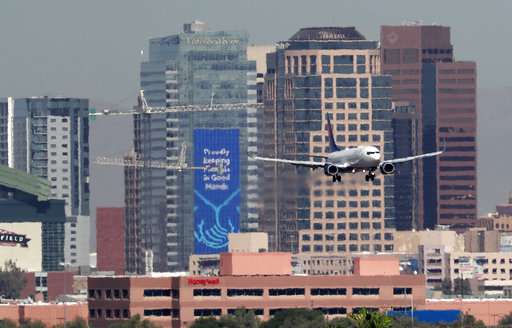
When temperatures soar as they have this week in downtown Phoenix, homeless people ride the air-conditioned light rail to avoid a heat so brutal it killed 155 people in the city and surrounding areas last year. An occasional siren wails as paramedics rush to help people sick from the heat.
Already devilishly hot for being in the Sonoran desert, Arizona's largest city is also an "urban heat island," a phenomenon that pushes up temperatures in areas covered in heat-retaining asphalt and concrete. Phoenix on Wednesday recorded a sweltering 116 degrees (46 Celsius), setting a new high for the date.
Phoenix officials say they are tackling urban warming, monitoring downtown temperatures, planting thousands of trees and capturing rainwater to cool off public spaces.
Elsewhere, Chicago maintains more than 500,000 trees to offset rising temperatures and is a national leader among cities for so-called green roofs covered with vegetation. Los Angeles adopted an ordinance in 2014 to require reflective "cool roofs" for new homes including rentals, while Seattle is working to restore the city's forested parklands.
But climate specialists like Brian Stone, who runs the Georgia Institute of Technology's Urban Climate Lab, said more is needed.
In urban heat islands, solar radiation and hot air from vehicles and buildings get trapped between high-rises. There aren't enough trees to provide shade and evaporative cooling that can bring down temperatures.
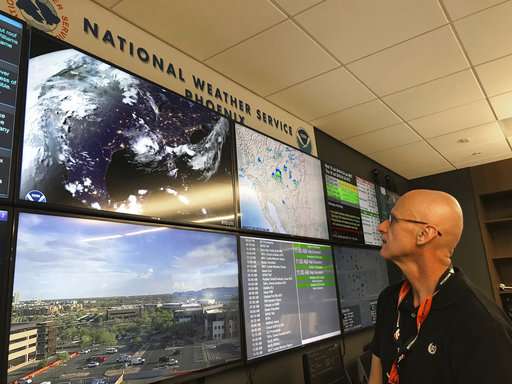
"We are working against a pronounced warming trend in large cities, and so it will require a substantial resurfacing of urban environments simply to slow the rate of warming," Stone said.
He said the heat island effect prevents a city from peeling off the day's furnace-like heat after the sun sets, driving up temperatures over time. His team's research shows Phoenix temperatures rising nearly 1 degree per decade, consistently placing it alongside Dallas and Louisville, Kentucky, as some of the fastest-warming U.S. cities. He said Phoenix is warming at three times the rate of the planet as a whole.
Stone noted the heat island effect is caused by local land use and energy decisions and is separate from global warming, but said the two often work together.
While the heat increases energy consumption and air pollution, authorities in Phoenix, the hottest of the three cities, worry most about health problems like heat stroke or heat exhaustion. So far this year, five people have died in Maricopa County from heat-associated causes, and another 34 cases are being investigated, public health officials said.
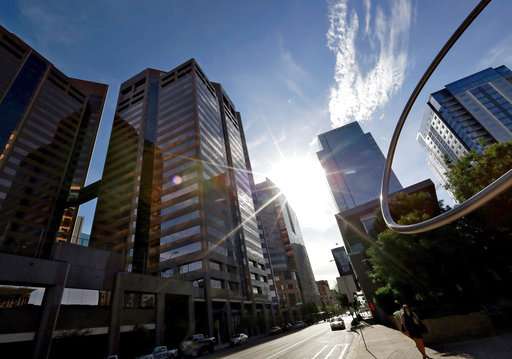
"If similar numbers of people died from any other type of weather event, "it would be considered a national disaster," noted Phoenix sustainability officer Mark Hartman.
The danger is especially acute for people like the homeless and elderly. An unusual heat wave in France in 2003 killed nearly 15,000 people, mostly old people left by vacationing relatives in homes without air conditioning as temperatures soared above 100 (37 Celsius) degrees.
Long noted in cities as far flung as Cairo, Mumbai, Johannesburg, Mexico City and Nanjing, China, the heat island effect can add more than 10 degrees Fahrenheit to nighttime temperatures, climate scientists say.
Forecasts now take into consideration the heat island, which in the case of Phoenix stretches some 25 miles (40 kilometers) out from the city's airport, National Weather Service forecaster Marvin Percha said.
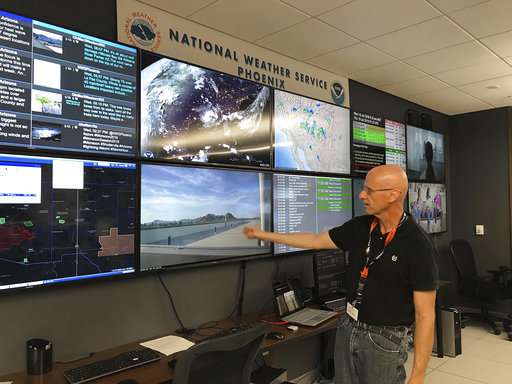
To show the difference the effect can make, he noted that in June 2017 the nighttime low at Arizona State University's grassy campus in Tempe was just 69 degrees (21 Celsius). But the nighttime low just 5 ½ miles (9 kilometers) away at Phoenix's Sky Harbor International Airport, where expanses of asphalt cover former farm fields, was 81 degrees (27 degrees Celsius).
Phoenix officials recently created a tree and shade subcommittee to study the heat island problem and make recommendations, and vowed to plant 3,000 new trees this year. Many people associate Phoenix with cactus, but acacia, blue palo verde, ironwood, desert willow and other trees thrive here.
Aimee Esposito, executive director of non-governmental Trees Matter, said her Phoenix organization this year plans to give 5,000 small trees to residents across the area's Valley of the Sun, and will plant more at schools through educational programs.
Matt Grubisich, director of operations and urban forestry for the nonprofit Texas Trees Foundation in Dallas, said planting trees is the easiest and most effective action to ease urban heat. He said his group plants 2,500 trees such as oak, elm, pecan and ash annually.
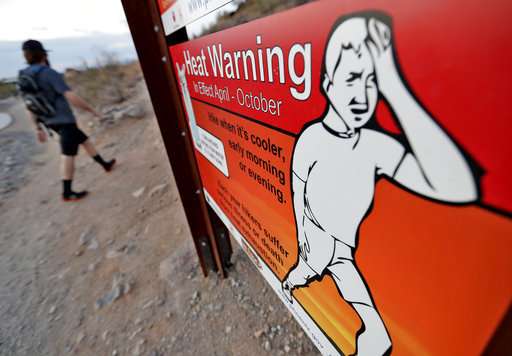
Louisville has planted some 10,000 trees over the past three years—including maples, oaks, elms and Kentucky coffee trees—and sometimes pairs with nonprofit groups to give away trees for smaller areas, such as dogwoods, said city sustainability officer Maria Koetter.
"I really think the community is getting the message about trees," Koetter said. "There's usually a line around the block during the giveaways."
Koetter said Louisville was the first major city to commission a heat management study, which was done by Stone's climate lab. It now offers $2,000 rebates to homeowners for cool roofs.
Stone said in some cities, hundreds of thousands of trees would be needed to fully counter the heat island effect.
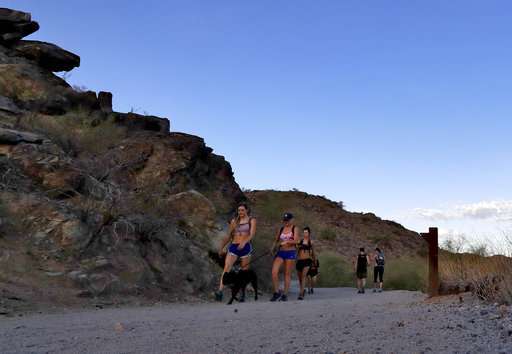
In Phoenix, Hartman, the sustainability officer, said the city is also looking at using lighter-colored asphalt for streets.
"A palette of solutions like this is necessary, especially planting shade trees with walkable corridors," said David Sailor, director of Arizona State University's Urban Climate Research Center.
His team is working with Phoenix to monitor urban warming in a low-income neighborhood sandwiched between a freeway and a hospital.
Sailor said monitoring stations installed in June will track the effect as the neighborhood is redeveloped over several years.
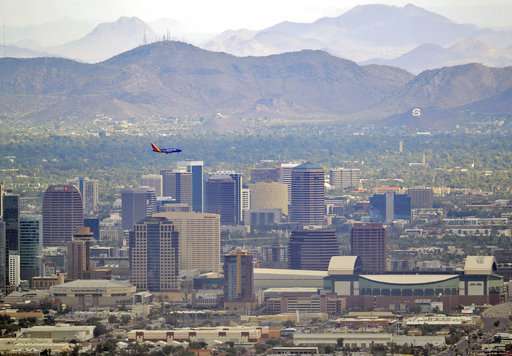
Places like Phoenix must consider the climate implications of all development decisions, Stone said.
"Just as tree cover and other cooling materials have been lost in cities through a piecemeal process of developing individual lots over time," he said, "we need to restore these materials though a process that requires more green and reflective surfaces with improvements to individual lots over time."
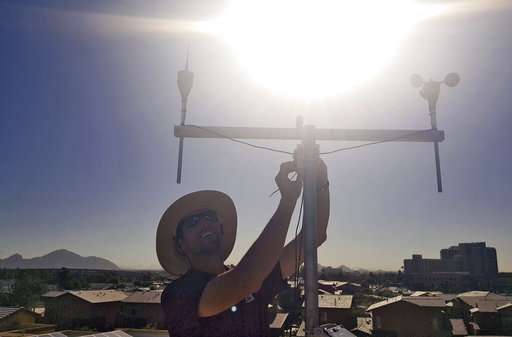
© 2018 The Associated Press. All rights reserved.




















